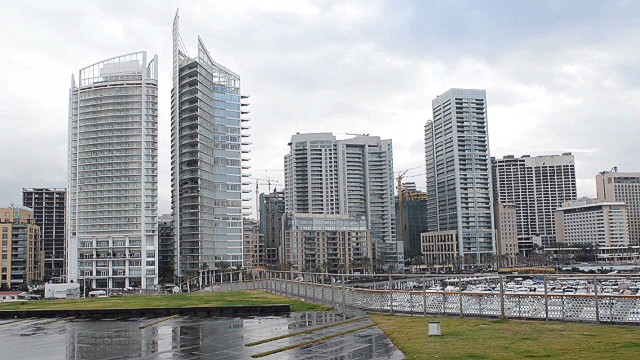Beirut buzzing as the city builds for the future

- Property in Beirut has grown impressively despite war in neighboring Syria
- Real estate purchases totaled $8.7 billion in 2014 alone
- Roughly 400 building projects are currently underway in the Lebanese capital, local experts say
One Square Meter explores the leading architectural designs, city plans and demand for property investment in emerging markets. Join CNN’s John Defterios as he visits some of the world’s most dynamic cities for an insight into the fast-paced world of real estate development.
Beirut, Lebanon (CNN) — If cranes are a visual barometer of the economic vibe of a city then central Beirut is buzzing.
Targeted car bombings linked to the ongoing Syrian conflict have raised anxiety and hurt overall growth in the Lebanese capital in recent years. But this seems to be a city that endures when it comes to real estate.
During the boom years towards the end of the last decade, total sales rose by 36% here hitting nearly $9.5 billion in 2010, according to Bank Audi.
And even though there was a slowdown last year, real estate purchases fell just 2.4% to $8.7 billion.
“Despite figures which show some kind of slowdown or stagnation, there are 400 real estate projects which are ongoing in Beirut, corresponding to close to 2 million square meters of development,” Baz said.
One such initiative is the 3 Beirut project in the center of the city’s bustling business district.
Although a couple of years behind schedule, the structure designed by British architects Foster & Partners is comfortably selling units priced as high as $10,000 per square meter ($929 per sq ft), senior adviser to the project, Farris Fara, told CNN.
Elsewhere, developers like Karim Basal have been throwing up boutique, modern apartments with a total area between 30 and 70 square meters to cater for modern city living.
On the city’s waterfront, meanwhile, British design firm Stow is making a statement with the edgy Le Yacht Club leisure and residence development.
This particular area of the city has had huge support from Lebanese investors based abroad.
Over the last 6 years, there’s been nearly $100 billion of net inflows into the country, more than half of which came in the midst of the financial crisis between 2008 and 2010.
“At the end of the day, they (Lebanese investors) are working all over the world, Europe, GCC (Gulf) countries but they all need to come and own part of the country,” said general manager of Le Yacht Club, Walid Kanaan.
Kanaan said he has sold a fifth of the flats ahead of the delayed opening in April with almost all going to Lebanese people outside the country.
While these investors may not suffer the first hand effects of car bombs or other violent spillover from Syria, Beirut’s continuing appeal is a sign that this city has been shaken but not toppled during another period of regional uncertainty.




